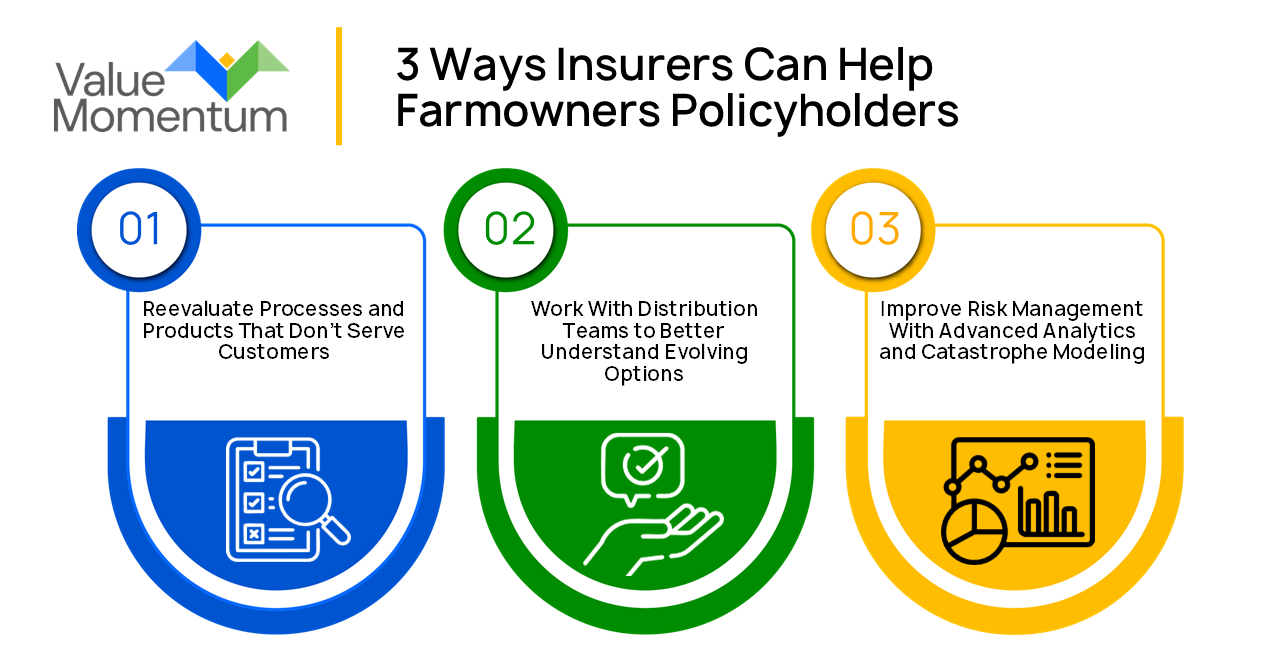With farmowners facing rising costs, unpredictable weather, and fluctuating economic conditions, securing a stable future has never been more challenging. In 2023 alone, extreme weather caused over $21 billion in agricultural losses, highlighting the urgent need for smarter insurance solutions.
The U.S. food and agricultural sectors directly support nearly 24 million jobs and contribute over $9.6 trillion to the economy. Despite all these challenges, the farm and crop insurance sector is experiencing growth. A recent AM Best report indicates a 13% increase in premiums in the past two years.
To truly support this vital sector, insurers must go beyond rate adjustments and develop innovative solutions that address the complex challenges facing agricultural policyholders. By enhancing coverage options and leveraging robust data analytics technology, insurers can help farmowners build long-term resilience and secure the future of agricultural businesses.
How Crop Insurance and Farmowners Coverage Is Shifting
Agricultural policyholders have a wide range of insurance options tailored to their specific needs, depending on the type of farming they engage in and the scale of their operations. Whether managing a corporate farm, a small family operation, or even a hobby farm, farmers must consider multiple layers of coverage to protect their businesses and assets effectively.
Modern farm protection extends far beyond common types of coverage such as property, farm or ranch liability, farm vehicle, crop, and livestock revenue policies. Many beginning farmers and ranchers require coverage that accounts for business risks, market instability, and specialty crops that are more vulnerable to economic and environmental fluctuations.
According to Farm Bureau, “For most farmers, selected coverage levels are closer to the 70% range, meaning farmers must experience a 30% decline in actual revenue (under expected revenue) before crop insurance comes into play.” Specialty crops — including such commonly consumed foods as almonds, grapes, apples, and potatoes — carry a higher risk than more widely grown commodities. Therefore, it’s no surprise that the number of specialty crop insurance policies has grown substantially, quadrupling in the past three decades, with liabilities now exceeding $23.2 billion.
However, the increasing costs associated with crop insurance and other necessary policies can strain farmowners, particularly smaller operations that may struggle to afford adequate coverage. Rising premiums and higher liabilities mean many farmers must weigh the cost of protection against potential losses, often leaving them either underinsured or forced to increase prices as a result of higher premiums.
With increasing variability in climate conditions and market forces, insurers must continue evolving their policies to meet the needs of all farmowners — from large-scale operations to small, independent growers — to ensure the long-term resilience of the agricultural sector.
What Insurers Can Do to Help Farmowners Policyholders
While the farming and agriculture industry faces innumerable risks, it still remains an actively innovative industry, where entrepreneurs and farmers are constantly striving to make improvements with technology. The insurance ecosystem needs to match pace with its clients by keeping up with environmental, technological, and economic shifts.
For example, ValueMomentum’s team recently visited a farm with former Kansas State Insurance Commissioner Ken Selzer to gain firsthand insights into crop insurance considerations. This visit allowed the team to see how producers select coverage, assess risks, and determine loss calculations based on factors like annual crop yield history and field conditions.
By working directly with experts and farmowners, insurers can refine their underwriting processes, ensure policies align with real-world farming challenges, and develop coverage that truly supports agricultural businesses. Programs like the Cover Crop Premium Discount Program also highlight how insurers can encourage risk-reducing practices, making coverage more affordable and effective.
Here are three other ways insurers and their partners can evolve the ways they think about farmowners, crop insurance, and other agricultural-focused lines of business.

1. Reevaluate Processes and Products That Don’t Serve Your Customers
To stay competitive, insurers must reassess existing policies and services to ensure they align with the evolving needs of farmowners. COUNTRY Financial’s Destination 2030 initiative exemplifies this approach by modernizing insurance offerings, including expanded crop insurance coverage in Illinois. Similarly, Hudson Crop’s MyYield endorsement allows soybean farmers to determine their guarantee based on their highest yield from the past decade rather than relying on a 10-year average.
In another example, the rise of parametric crop insurance presents a new approach to managing risk. Unlike traditional policies, which reimburse losses based on yield, parametric insurance pays out when predefined conditions — such as extreme weather events — occur, offering faster and more predictable claims processing. As all new crop insurance products must be approved by the Federal Crop Insurance Corporation (FCIC), insurers should focus on developing innovative yet compliant policies that enhance flexibility and affordability for farmowners.
2. Work With Your Distribution Team to Better Understand Evolving Options
Farm insurance is not one-size-fits-all. With newer comprehensive plans such as Whole-Farm Revenue Protection and the Micro Farm Program, insurers need to confirm their agents are well-versed in the latest coverage options. Tools like the RMA Agent Locator help farmers find knowledgeable agents, but insurers must also invest in educating their own distribution teams to provide tailored advice for policyholders.
A personalized approach is key. Some insurers, like Farm Bureau Financial Services, offer on-site SuperChecks to review a farmer’s full coverage needs, from machine replacement to livestock freezing protection. If a farm expands into agritourism, for instance, insurers should proactively guide policyholders on necessary coverage adjustments. Connecting customers with additional resources, such as The Coalition to Support Iowa’s Farmers’ Building Your Livestock Legacy Program, ensures they have the support needed to navigate their evolving risks effectively.
3. Improve Risk Management With Advanced Analytics and Catastrophe Modeling
Advanced analytics and catastrophe modeling can help insurers better assess and prepare for agricultural risks. By leveraging data-driven insights, insurers can improve underwriting accuracy, ensure they have sufficient reserves to cover claims, and provide farmowners with more precise risk assessments. And catastrophe modeling tools allow insurers to simulate weather-related disasters and predict their potential financial impact.
Emerging technologies also play a critical role in improving risk management. AI-driven weather prediction, remote sensing, and IoT-based monitoring help farmers make proactive decisions to protect their crops. Resources like Aon’s agricultural risk reports provide valuable guidance for insurers looking to enhance their risk assessment models. By integrating these innovations, insurers can offer more effective coverage solutions while strengthening the agricultural sector’s ability to withstand extreme weather events.
Securing the Future of Farm and Crop Insurance
As the agricultural landscape continues to evolve, insurers that embrace innovation, leverage technology, and adapt their policies will be best positioned to meet the needs of today’s farmowners.
Success in this space depends on collaboration — between insurers, policymakers, and farmers — to build sustainable solutions that address today’s challenges while anticipating tomorrow’s risks. By embracing innovation and proactive risk management, insurers can safeguard the future of farm and crop insurance for generations to come.
To understand more about how modern-day analytics tools can help your organization understand future risks, read our case study, Fortune 500 Insurer Revolutionizes Homeowners with AI and Aerial Imagery.




